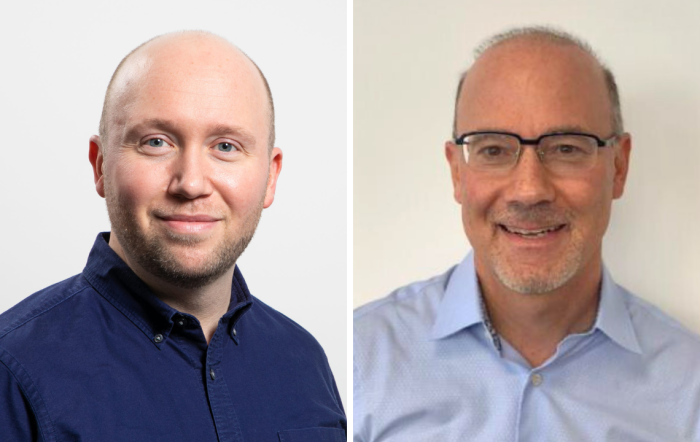Get analysis, insight & opinions from the world's top marketers.
Sign up to our newsletter.
Marketers often have a vague awareness of behavioural science, but it rarely goes very deep. Independent advisor, Scott Young, and BVA Nudge Consulting's Ted Utoft outline key ideas that could transform communications.

Most marketers claim to have at least a passing awareness of behavioural science. However, their familiarity often begins (and ends) with the concept of “nudging” - or perhaps a handful of heuristics (such as Loss Aversion or Present Bias) that they’ve employed in the past.
This is unfortunate, as it dramatically undersells the scope and depth of the field. It also means some marketers think that they already “know” behavioural science, when they are only scratching the surface.
Based on our decades of experience at the intersection of marketing, consumer insights and applied behavioural science, here are three areas of opportunity:
Historically, consumer marketing has been deeply rooted in demographics, often because this was most readily available information. Of course, the field has progressed and become more sophisticated over the years, influenced by both psychographic profiling and the mass of behavioural data now available.
However, it’s important to remember that these approaches also have their limitations. Psychographics, for example, are typically driven by claimed attitudes - and unfortunately, people’s intentions don’t always translate consistently into their actions. Data on the other hand tells us what people are doing, but not necessarily “why” they do it.
Behavioural science complements these approaches, by encouraging us to consider the barriers that are impeding consumer actions - and to ask these three questions:
Do potential customers lack awareness and/or intent to purchase? Marketers often make this assumption – and therefore focus almost entirely on claims or offers to create interest.
Do they have intent, but are held back by lack of resources, opportunity - or perhaps a particular concern? This information is vital in prioritizing and targeting, as there’s no sense in wasting resources on those with “hard” structural barriers. Among those who are actual prospects, we’ve found that the answer often lies in addressing a very specific barrier, perhaps by answering a lingering question or providing an important reassurance.
Do they simply fall into familiar habits? This is the acknowledged “sweet spot” for behaviourally-informed interventions, such as changes in processes and/or reminders within the physical environment. Fortunately, there are often a sizable percentage of potential customers who fall into this category and need to be helped/guided (in forming new habits), rather than convinced (of the need to change).
In our experience, we’ve found this way of segmenting and approaching customers has helped clients to prioritise and focus on segments with “softer” barriers to action and to customise messaging (to overcome each segment’s specific hurdles).
Consumer marketing spend has historically been weighted towards the top of the purchase funnel. The implicit assumption being that if people weren’t acting as we’d like, it’s because they weren't aware of our offer – or perhaps they lacked proper motivation.
Behavioural science reminds us that intent does not consistently translate to action. It also reinforces that there is a true science to helping people overcome “intent to action gaps”. Such efforts should be systematically integrated within marketing plans and design briefs, so that they become a consistent part of our thought process and toolkit.
More energy should also be paid to the science of helping people form and retain their new purchase and consumption habits. For example, on a recent project to promote handwashing among children, we came up with the idea of using a small stamp, which would come off with the use of soap or hand sanitizer after several washes. This became a playful classroom ritual, with children’s hands stamped in the morning as part of taking attendance. At the end of the day, the children would proudly show their parents or caregivers their clean hands. This intervention, among others, helped to reduce Covid transmission by 14%. By engaging and gamifying the hygiene routines, children were more engaged and compliant.
Behavioural Science also has much to teach us about how people process their experiences. Perhaps its most digestible and actionable concept is the “Peak & End Rule”, which states that the most powerful and memorable aspects of an experience are its “peak” moments and the very end.
The most obvious takeaway is to focus upon the conclusion of a client experience, which can sometimes leave a lasting sour note in the customer’s mind (if it is solely associated with paying the bill!).
Perhaps a more interesting approach is to devote more energy towards creating “peak” moments within the customer journey, as we’ve seen that it's disproportionately powerful to create truly outstanding (and thus memorable) interactions and experiences. These small “micro-moments” of delight (“peaks”) tend to linger in people’s minds (and ultimately lead to brand advocates and repeat customers).
Peak moments are highly correlated with doing or delivering the unexpected. As it turns out, high-leverage situations (such as handling customer service inquiries or fielding special requests or complaints) are actually excellent opportunities to surprise and delight, because tensions are high and customer expectations are typically quite low. Going the extra mile in such moments will have a disproportionately high impact on customer memory and perception.
These applications illustrate that Behavioural Science has far more to offer than simply “nudging.” By more thoroughly understanding how people process information, make decisions and even build memories, we can create better marketing. We can focus our energy and resources towards the most promising segments and specific behaviour changes, improve customer retention by reinforcing new purchase and usage habits - and foster more brand advocates by creating unexpected peak moments and memorable experiences. Sustained progress in any one of these areas (prioritisation, retention and advocacy) is likely to impact the bottom line.
A full version of this article can be found here.
Scott Young is an independent advisor and educator.
Ted Utoft is CEO UK & Chief Growth Officer Global at BVA Nudge Consulting.